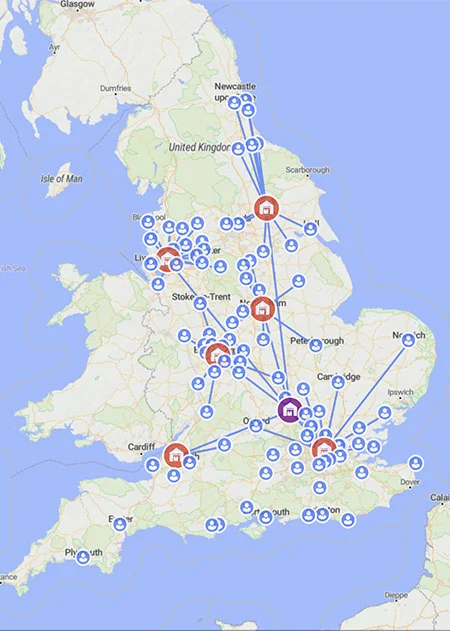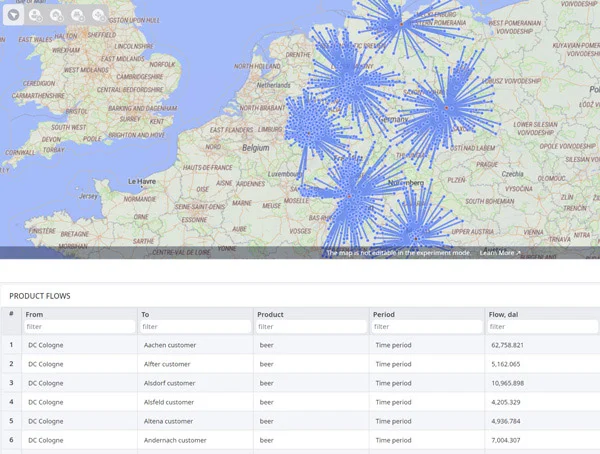Greenfield analysis (GFA), sometimes called center of gravity analysis, is a supply chain network design method commonly used on the early stages of supply chain planning. Greenfield analysis helps to effectively solve a facility location problem — to determine the optimal quantity of distribution centers (DCs) or production facilities and the best locations to place them. Greenfield analysis should be your first step in supply chain network design. To run GFA you do not need to come up with any options for facilities locations, the task of greenfield analysis is to offer you these options from scratch.

Greenfield analysis assumes a high level of abstraction, so a minimum number of details will be needed:
The output of the analysis is an approximate, optimal location for a production or warehousing facility at which the cost of all inbound and outbound transportation is minimized. This optimal point is called the center of gravity.
The basic greenfield analysis does not take into account roads, cities, peculiarities of geographical areas, etc. — it just offers the optimal mathematical solution. Its more advanced variations include greenfield analysis with roads and brownfield analysis.
The results of greenfield analysis can be used in further supply chain network optimization — to find the optimal site locations from several pre-suggested and more realistically-placed options.
To learn how a greenfield analysis experiment in anyLogistix can help you find the optimal solution to a facility location problem, read the Supply Chain Simulation and Optimization book. The book includes the example Excel scenarios to practice model building in anyLogistix. Download the free version of anyLogistix software and start exploring its capabilities.
A greenfield analysis with roads is an advanced version of a basic GFA experiment. It uses the same set of data and defines the optimal location for the certain quantity of DCs. The only difference is that this experiment is set to consider real roads and the population of cities. So, if road network and infrastructure coverage in your area is uneven, you will get more realistic and geographically accurate results using greenfield analysis with roads. If the terrain is flat and covered with roads evenly, basic GFA will provide more mathematically accurate results.
For a deeper dive into greenfield analysis with roads in anyLogistix, you can watch the following how-to video.
Center of gravity analysis example
While greenfield analysis is used to find the optimal locations to setup a preset number of new production facilities or warehouses, the brownfield analysis (BFA) can be used for supply chain restructuring or expansion of existing networks.
Brownfield analysis can be very useful when you already have an active supply chain but need to restructure it, for example, due to addition of new customers in remote locations or as a consequence of mergers and acquisitions.

In anyLogistix, brownfield analysis uses the greenfield analysis experiment but with changes to the input data to reflect the existing supply chain. You will need to define:
Brownfield analysis will generate a number of additional facilities, their locations, and demand. Using BFA you can also figure out how to easily integrate the new objects into the existing supply chain structure and carry out a supply chain restructuring quickly and efficiently.
Summing up, we can say that greenfield and brownfield analyses are extremely useful tools for basic review of the supply chain structure and its future optimization. Carrying out these experiments with anyLogistix, you can:
Looking for ways to create an optimal supply chain network? Start building your supply chain model with anyLogistix software.